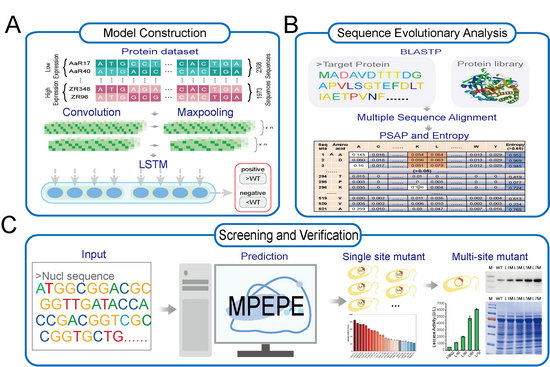Recently, the research group of Prof. Jian Tian from Biotechnology Research Institute, Chinese Academy of Agricultural Sciences has proposed a strategy to design the mutation with improvement the protein expression in E.coli. The methodhas been published on Computational and Structural Biotechnology Journal with the title of “MPEPE, a predictive approach to improve protein expression in E. coli based on deep learning”.
The expression of proteins in Escherichia coli is often essential for their characterization, modification, and subsequent application. Gene sequence is the major factor contributing expression. In this study, we used the expression data from 6,438 heterologous proteins under the same expression condition in E. coli to construct a deep learning classifier for screening high- and low-expression proteins. In conjunction with conserved residue analysis to minimize functional disruption, a mutation predictor for enhanced protein expression (MPEPE) was proposed to identify mutations conducive to protein expression. MPEPE identified mutation sites in laccase 13B22 and the glucose dehydrogenase FAD-AtGDH, that significantly increased both expression levels and activity of these proteins. Additionally, a significant correlation of 0.46 between the predicted high level expression propensity with the constructed models and the protein abundance of endogenous genes in E. coli was also been detected. Therefore, the study provides foundational insights into the relationship between specific amino acid usage, codon usage, and protein expression, and is essential for research and industrial applications.
Zundan Ding, a Ph.D. student and Dr. Feifei Guan of the Biotechnology Research Institute are the co-first authors of this paper. Dr. Jian Tian of the Biotechnology Research Institute, Dr Huoqing Huang of the Institute of Animal Science, and Professor Tamir Tuller of Tel Aviv University in Israel are the co-corresponding authors of this paper.This work was funded by National Key R&D Program of China, and the Agricultural Science and Technology Innovation Program of Chinese Academy of Agricultural Sciences.

|